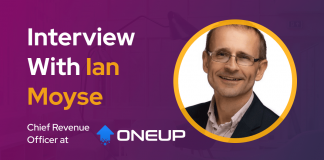Hi Peter, tell us about yourself, your background?
I am the founder and principal of The Second Derivative and the author of the Great Demo! methodology, focused on helping software organizations improve their sales and marketing results – primarily through improving organizations’ demonstrations.
The bulk of my experience is with complex, enterprise software and strategic systems sold to varied audiences in a range of vertical markets. I have enjoyed roles in technical and product marketing, marketing management, presales and presales management, sales and sales management, senior management and the C-Suite – as well as serving on Boards of Directors.
I have also delivered thousands of demos – and have been on the receiving end of thousands of demos from a broad variety of vendors around the world, from start-ups to the world’s biggest software vendors, and verticals from accounting to zymology.
In 2003, I authored Great Demo! – a book that provides methods to create and execute compelling demonstrations. The 2nd edition of Great Demo! was published March 2005.
In July 2004, I enabled and began moderating DemoGurus®, a community web exchange dedicated to helping sales and marketing teams improve their software demonstrations, which was subsequently transitioned to the Great Demo! LinkedIn Group in 2010-2011.
Before The Second Derivative, I founded the Discovery Tools® business unit at Symyx Technologies, Inc., where I grew the business from an empty spreadsheet into a $30 million per year operation. Prior to Symyx, I served in marketing, sales, and management positions at MDL Information Systems, a leading provider of scientific information management software.
I am currently serving on the Board of Directors for Collaborative Drug Discovery, Inc., and also as an advisor to IN2SV, Inc. and a mentor to StartX, the Stanford University start-up accelerator. I hold a degree in chemistry.
I have an experience as an individual contributor, manager and senior management in marketing, sales, business development, and as a member of the C-suite. I have also been, and will continue to be, a customer.
Online commerce was booming in 2020, and so did consumer reviews. – How can brands better utilize this data to improve their customers’ experience?
One challenge with consumer reviews is the tendency for consumers to mix together their impressions of product and company. A 1-star review could have been the result of a poor interaction with the vendor while the product itself was terrific – and vice versa. The use of AI to identify and separate these parameters (and likely other orthogonal parameters) may prove very useful for addressing areas of weakness and opportunities to exploit.
Vendors that choose to analyze competitors’ reviews similarly may uncover additional insights. Similarly, applying these same techniques to other, non-competitive offerings may suggest further ideas: E.g., “Why do consumers love this product so much?” Etc.
Peter’s tips for personalization
What tips do you have for companies that want to improve their personalization strategies?
For B2B vendors, move beyond “persona” to “Job Title” – get more specific. A “Sales” persona might embrace several distinctly different job titles who have broadly differing needs and interests, e.g.:
Chief Revenue Officer
Head of Sales
Sales Manager
Seasoned Salesperson
Junior Salesperson
New Salesperson
Sales Enablement
Sales Operations
Do you think personalization and customer-centricity are going to become increasingly more relevant in the coming year? How so?
Absolutely. As the granularity of information captured in various interactions increases, there will be corresponding opportunities to analyze and take action. The next challenges may be to find a way to sort through a super-abundance of customer info…!
Social media pages have become crucial for companies in most industries, especially in eCommerce. What’s the most common mistake you see in a company’s social media strategy?
Investing too heavily in social media “navel gazing” activities – in other words, trying to tease out more information than is actually present…
What’s the most insightful book you read in 2020?
“Grant”, by Ron Chernow. While not a business book, exploring the parallels in history (in the U.S.) between 1850-1875 and 2005-2021 (and beyond) are a terrific (and frightening) learning experience!
It looks like working from home is going to stay with us for the foreseeable future. How should Executives gear up to the changing times?
B2B execs will need to determine when to invest in face-to-face meetings and when to continue interactions over the web. I can easily visualize a new category, in addition to “High Touch”, “Low Touch”, and “No Touch” strategies: “Physical Touch”. These will be situations where the customer and/or vendor wants a stronger relationship than can be achieved over the web.
Interestingly, while business meetings can be done quite effectively over the web, the relationship building that takes place over lunches and dinners, etc., has been lost with a web-only level of interaction. It is often in these informal settings that deeper relationships evolve and richer levels of information exchange take place.
Vendors with expensive, complex solutions that require long implementation timelines will likely embrace a “Physical Touch” strategy. However, even Physical Touch will likely be scaled back, with vendors sending fewer representatives for face-to-face meetings than previously, applying a hybrid approach with a mix of vendor players joining these meetings both face-to-face and remotely over the web.
Vendors whose products and services sit between expensive offerings and low-cost or product-led software may choose to employ Physical Touch as a method of outflanking competitors who stay with a web-only approach – this may become an interesting opportunity to differentiate…!
Last but not least, what is your favorite CX metric?
Two metrics:
Value Realization Events – the first successes using the solution (not the full ROI, just one “turn of the crank” or desired deliverable…).
Actually having a conversation with a customer – what do they like about our offering and interactions, what could we do better, and anything else we didn’t ask but should…!






